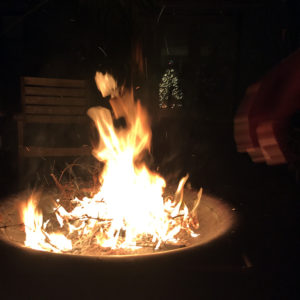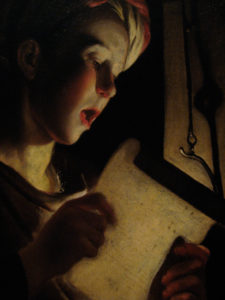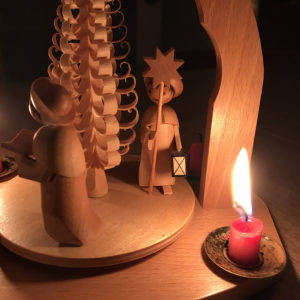And so the shortest day arrives, and with it, the longest night. It is the solstice of Midwinter, this deepest, darkest night, this 21st of December. The vast celestial mechanics of our Earth spinning on its axis, tilted at about 23.5 degrees, as it spins and makes its rotation around the sun: these are the source of our seasons. There’s a name for this tilt: Obliquity. It is what gives us spring and summer, fall and winter, the source of our annual round, our wheel of the year. The beauty of the balance and the gift of change––even for those of us who like things to stay the same––is almost impossible for me to fathom sometimes. It is the source of what we do and when we do it and of so many of our connexions to the past, to our ancestors, to antiquity. Without obliquity, this Book of Days and all our daily ceremonies would have little meaning, little connexion to the planet we live on and the stars in our heavens.
Tonight, at 5:23 PM Eastern Time, the Earth will reach its semi-annual moment of extreme, and with it, the Northern Hemisphere will experience its longest night, while the Southern Hemisphere will experience its shortest. There, it is summer. Here, it is winter. And while the tilt does not change (I used to think it did), the orientation of our planet’s tilt toward the sun does change. For half the year––half our orbit around the sun––the Northern Hemisphere is tilting away from the sun. Today we find ourselves at the midpoint of that half year’s journey. From now on, days will grow longer, until we reach the next midpoint, its opposite, in June, when the Northern Hemisphere will be tilting toward the sun. These midpoints are the solstices: Midwinter and Midsummer.
The celebrations surrounding these events are perhaps the most ancient ones we know, going back long before the time of Christ, whose birth we celebrate at Christmas. No one knows for sure when the historical Christ was born, but the church that arose from his legacy early on assigned two important events to the times around the solstices. And while the Church generally does not celebrate births, the birth of St. John the Baptist was assigned to the Midsummer Solstice… and still we celebrate St. John’s Day on the 24th of June. The Midwinter Solstice––the time of our greatest darkness––was given to the birth of his cousin, Jesus Christ. “Jesus, the light of the world,” goes the old Christmas hymn. Potent imagery.
Here’s what we will do to mark the night in our quiet home: From a forgotten corner of our yard, we will gather up last year’s Christmas tree. It’s been there, quiet, since Candlemas Eve last year, at the start of February, for that is the night we typically remove all the last vestiges of Christmas greenery from our home. That part––the removal of Christmas greenery at Candlemas Eve––is an old old tradition, one not widely followed these days. But we like it. It was only two days ago that we brought this year’s Christmas tree into the house… and who knew there was a Christmas tree shortage this year, but apparently there is. The shortage has something to do with the financial crisis of 2008 and how it put many farmers out of business and so not many Christmas trees were planted that year and as it takes ten years for a Christmas tree to mature, well, this year there are quite a lot fewer available. We bought our tree from the tree lot in West Palm Beach, with not many to choose from, and the next night we passed by again and the tent was dark, the lights unplugged, not a tree to be found. My grandparents, who used to get their tree on Christmas Eve, would have been out of luck, and I wonder how many people will have to make do with something other than a Frasier Fir or a Noble or what have you.
Oh, but back to tonight. Tonight we will gather up last year’s tree, which has been drying all these months, and we will use it to fuel the fire Seth will build in the copper fire bowl in the back yard. We will light that fire and tend it and watch the smoke rise into the Solstice Night air to meet the stars and to carry on through the neighborhood. The smoke will carry our wishes for peace and goodwill on this longest night, this darkest night, when we are called on to be a light in the darkness. These darkest nights bring some deepest joys, and this, for us, is one of them. And so we bid you peace and goodwill, too, on this longest night and through the year.


